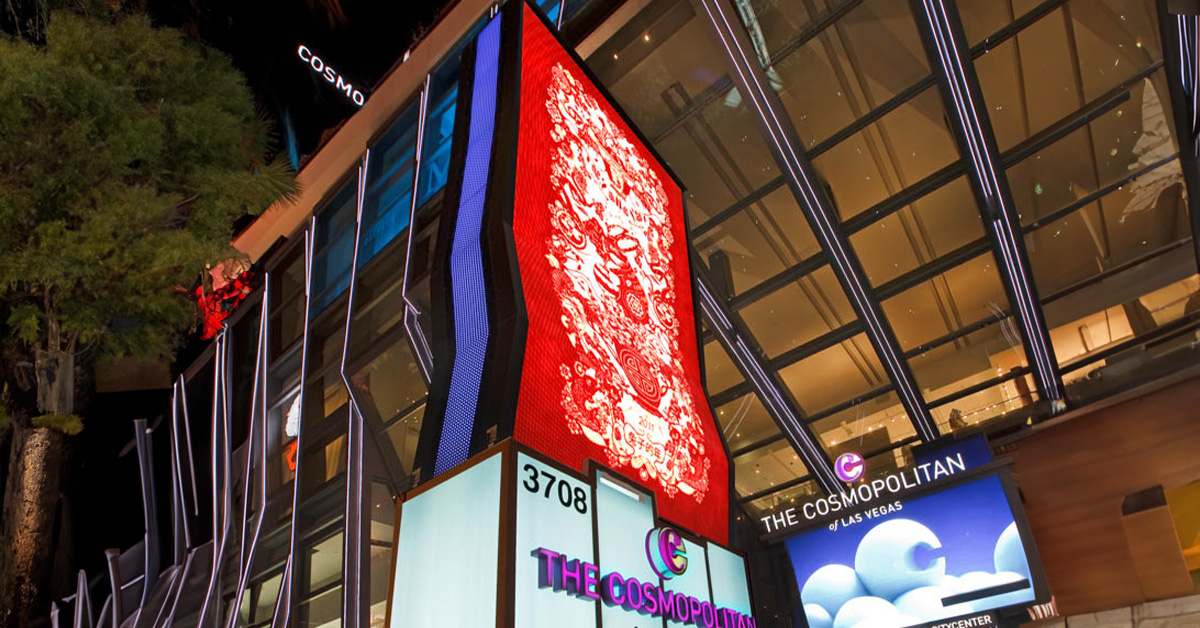How to Incorporate Signage Seamlessly into Built Environments
Effective architectural signage can transform spaces, blending functionality with design to enhance navigation and aesthetic appeal. It is critical to find partners with enough experience and core competencies to offer turnkey design/ build services. Some core competencies to look out for in a partner include:
- Pre-construction
- Design
- Engineering
- Fabrication
- Logistics
- Implementation
- Commissioning and programming
- Service
- Safety
Collaborative Design
Early collaboration between pre-con planners like architects, designers, engineers and sign experts is crucial for seamless signage integration in and around your property. By involving experienced professionals from the outset, designs can be developed that harmonize with architectural elements, ensuring signage is functional while still aesthetically pleasing. This multidisciplinary approach allows for cohesive solutions that enhance the overall design and experiences, creating spaces where signage feels like a natural extension of the architecture and acts as an extension of your brand.
Architectural Integration
Incorporating signs and electronic displays into architectural features such as walls, floors, and ceilings can create a more cohesive and space-saving solution. Signs can blend naturally into the environment using materials that match or complement the building’s finishes. This strategy maintains the space’s aesthetic integrity and enhances the overall design, making the signage an integral part of the architecture rather than an afterthought.
Clean Composition
A minimalist approach to sign design helps reduce visual clutter and maintains the space’s clean look. Simple, clear signage that conveys essential information without overwhelming the viewer is critical. Consistent branding across all visual elements ensures a unified visual language, reinforcing brand identity and enhancing the overall aesthetic. This strategy keeps the focus on the architecture while still providing necessary guidance.
Dynamic and Adaptable
Digital and interactive displays offer flexibility and adaptability, making it easy to update content in real time. Digital displays can be seamlessly integrated into the design, providing dynamic information that can change as needed. In some cases, these displays can provide added value by providing digital ad space.
Contextual Relevance
Designing signs and displays that reflect and respect the local cultural and historical context can enhance the sense of place and identity. This approach ensures that signage provides information and contributes to the environment’s overall atmosphere and character. Additionally, integrating these solutions harmoniously with natural surroundings helps preserve the area’s aesthetic and ecological balance, creating a more pleasant and sustainable space.
Techniques for Effective Integration
Wayfinding Systems
Effective wayfinding systems rely on clear hierarchies of information and intuitive design elements. Establishing a logical flow of information helps users navigate spaces effortlessly. Utilizing color coding and universally understood symbols further enhances this process, making navigation intuitive and reducing the cognitive load on users. These techniques ensure that wayfinding systems are both functional and aesthetically pleasing.
Integrated Lighting
Lighting plays a crucial role in the visibility, ambiance, and appeal of both exterior and interior environments. Coordinating signs and specialty lighting with a building’s overall lighting scheme requires careful planning and design.. Techniques like backlighting and halo effects can subtly highlight signs and lettering to elegantly enhance functionality and aesthetic appeal. Programmable LED technology allows for a great deal of flexibility for a variety of projects and applications. Proper lighting integration ensures that your infrastructure remains effective and visually cohesive.
Custom Fabrication
Tailoring signage to fit specific architectural features and user needs results in unique, practical solutions. Custom fabrication can introduce signage that seamlessly blends with the environment while meeting functional requirements. Using innovative and sustainable materials can enhance design, making your signs and displays stand out as distinctive and attractive elements within a space.
Enhancing Aesthetic Appeal
Artistic Integration
Treating the integration of signage, specialty lighting, and electronic displays as an art form can turn functional elements into visual highlights. Creative designs and artistic collaborations can make signage a distinctive feature of any building, room, tower, or skyline. Adding character and visual interest to your construction project is one of the most proven ways of standing out from the crowd. This approach enhances the aesthetic appeal and engages users, making the space more enjoyable and memorable.
Sustainability
Choosing eco-friendly materials and energy-efficient lighting options aligns signage with sustainable building practices. This not only reduces environmental impact but also appeals to eco-conscious users. Sustainable sign and lighting solutions contribute to a greener environment and can be a key element in achieving overall sustainability goals for your space.
User-Centric Design
Focusing on the end-user experience is essential for effective architectural signs and displays. For example, if you are integrating wayfinding signs, ensuring that signage is intuitive and accessible will enhance the facility by making navigation more straightforward and enjoyable. User-centric design considers the needs and preferences of the users, creating signage that improves the overall functionality and appeal of the space. This approach ensures that signage looks good and works well for those who use it.
Conclusion
Integrating signs, lighting, and/ or electronic displays into built environments requires strategic planning, innovative design, and collaboration. By focusing on early integration, utilizing architectural features, minimizing visual clutter, and employing modern techniques, you can create a truly unique and aesthetically appealing space. In essence, both form and function are essential and pertinent when integrating signs and displays into your overall construction project. It is critical to partner with a group that has the experience and strategic know-how to make your projects come to fruition.

